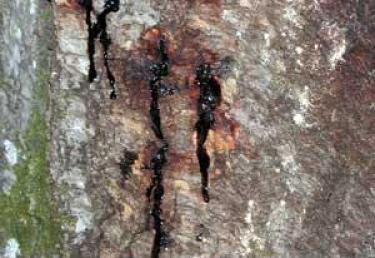What Are Oak Woodlands?
Oak trees grow all over the world, from the foothills of the Himalayas to the tropics of Central America and Polynesia. But North America boasts the greatest diversity of oak species, with more than 50 species in the U.S. alone.
Oaks grow in many different forest types: dry-mesic woods, southern mesic woods, floodplain woods and others. But they dominate in two increasingly rare habitats: oak savannas and oak woodlands. In oak savannas, oaks are spread out with large grassy areas in between where plenty of sunshine reaches the forest floor. In oak woodlands, the oaks grow more densely, with canopy coverage of 50 to 100 percent in some areas. Despite their differences, both oak savannas and oak woodlands are in decline. Why? Because of a combination of fire suppression, disease and changes in how the landscape is used.
Oaks withstand fire well, and do best in forests that have frequent low-intensity fires. These fires control the growth of shrubs and other trees, preserving the openness of oak savannas and woodlands. But in the absence of fire, other trees—particularly those that are less tolerant of fire and more tolerant of shade than oaks are—are replacing oaks. These trees create a shadier, more crowded forest, where oak seedlings are less likely to survive and grow.
In some parts of the U.S., oaks are also affected by diseases and pests. These can include:
- Oak wilt, which is caused by a non-native fungus, Ceratocystis fagacearum, that invades oak trees. Oak wilt is most common in the eastern U.S.
- Sudden oak death, which is caused by the fungus Phytophthora ramorum and affects oaks in the coastal Western U.S. It has the potential to spread to other regions.
- Red oak borers, which are insects that burrow into and live within the trees, leaving them more susceptible to decline if there’s a drought or other source of stress.
- Deer overpopulation, a problem in many U.S. forests, can reduce oak populations by eating too many oak acorns and saplings before they have a chance to grow into trees.
When you combine fire suppression and disease/pest damage with the clearing of oak forests for development, or timber harvesting practices that target larger, more valuable trees (as oaks often are), it becomes difficult for oak woods to keep up. In some parts of the country, timber harvests remove approximately 30 percent more oaks than are replaced each year. And that’s not good, because oak woods are important for people, the environment and even the economy.
How can I get more tips?
It’s simple! Enter your email below.

